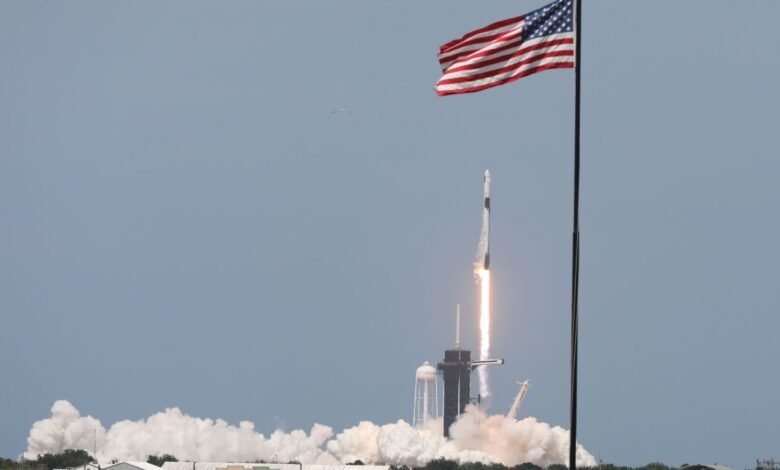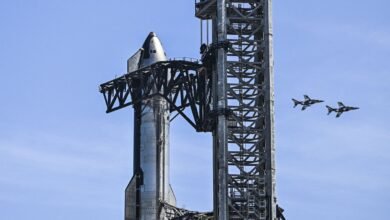SpaceX Starship Launches May Cause 2-Hour Flight Delays in Florida

▼ Summary
– SpaceX’s Starship launches from Kennedy Space Center could cause airport ground stops, reroutes, and delays of up to two hours in Florida airspace.
– The FAA’s draft environmental impact statement warns that reentries of Starship’s stages may also require ground stops at major airports like Orlando, Miami, Tampa, and Fort Lauderdale.
– Aircraft Hazard Areas would be established over the Atlantic, Gulf of Mexico, Caribbean, and Central American airspace, potentially closing dozens of oceanic airways.
– Starship’s larger size and early development stage pose greater risks than SpaceX’s Falcon rockets, leading to variable airspace closures that may decrease as reliability improves.
– The FAA is reviewing up to 44 annual Starship launches and will use mitigation strategies like pre-coordinated reroutes and real-time data tools to reduce operational impacts.
Plans for SpaceX to launch its next-generation Starship rocket from Florida’s Kennedy Space Center could lead to significant disruptions for air travelers, with federal regulators warning that flight delays of up to two hours may become a regular occurrence. A newly released environmental impact statement from the FAA outlines how these massive launches could force temporary ground stops, reroutes, and extended holding patterns across some of the nation’s busiest airports.
The draft document highlights that even after liftoff, the return of Starship’s Super Heavy booster and upper stage could trigger further airspace closures. Major Florida hubs including Orlando International, Miami International, Tampa International, and Fort Lauderdale/Hollywood International are among those expected to be affected. On average, launch and landing operations could cause delays ranging from 40 minutes to two hours, with the possibility of cancellations or diversions for certain flights.
To manage these risks, the FAA plans to establish Aircraft Hazard Areas over broad sections of airspace, potentially covering parts of the Atlantic Ocean, the Gulf of Mexico, the Caribbean, and even Central American flight paths. These zones could lead to the closure of dozens of oceanic airways, requiring substantial rerouting of commercial flights.
While SpaceX has a long history of launching Falcon rockets from Florida with minimal disruption, the scale and experimental nature of Starship introduce new challenges. Falcon launches are now routine and predictable, but Starship, still in development, has experienced several failures during testing. Its enormous size also means a larger potential debris field in the event of an anomaly.
Airport officials in Tampa and Miami confirmed they have not yet been briefed on operational changes, though Tampa International expects those discussions to begin soon. An FAA spokesperson noted that the agency is already collaborating with aviation stakeholders and SpaceX to model launch trajectories and refine airspace management strategies.
Starship, standing nearly 400 feet tall, is designed for lunar and Mars missions. Both stages are fully reusable, supporting a high launch cadence for satellite deployments and deep-space exploration. Currently, all Starship flights originate from SpaceX’s Starbase facility in Texas, but the company aims to expand operations to Kennedy Space Center, prompting the ongoing environmental review.
The FAA’s assessment considers up to 44 Starship launches per year from Florida, each involving booster and ship landings either on ground pads, droneships, or via ocean splashdowns. While temporary airspace closures are expected, the agency believes mitigation strategies like pre-planned reroutes and dynamic scheduling could ease the impact on airlines.
Advanced tools such as the Space Data Integrator are already being used to minimize closure durations by providing real-time data from launch operators. The FAA aims to further develop these systems to improve situational awareness during missions.
A parallel review is underway by the U.S. Space Force for potential Starship operations from Cape Canaveral, which could see up to 76 launches annually. Details on airspace impacts from that site are still pending as infrastructure preparations continue.
(Source: TechCrunch)


